During one my hostel stays (in Paris most likely), I met a Chinese Art teacher who takes month-long vacations in Europe to visit what else, but Art. We had a good long chat about Art in Europe - why it's not possible to replicate the Art of bygone eras (too much modern day distractions), the pros of relocating Art to museums (which may offer better protection and conservation)... She tells me that she enjoyed visiting German museums (I think it's got to do with how they arrange and narrate exhibits), and how she just can spend a day at a museum (I can't travel with her). After visiting the British Museum (and then the Louvre), I now believe that it is more the possible to spends days in a museum. According to her, at the end of my Europe trip that summer, I would have visited 2 of the 3 top museums in the world (the last being The Met in New York) - how awesome is that. There are thousands of masterpieces in these museums, but placed beside the Greats, it's hard not to pale in comparison. It's a pity we can't spend more time learning about the background of each piece. Maybe we need to spend a night in the museum?
This is how HUGE the museum is
The building itself is a work of Art
The huge museum has a space large enough to accommodate the throngs of visitors
The Highlights of the Museum for me are
1. Hoa Hakananai'a Easter Island statue
Basalt Statue known as Hoa Hakananai'a
(probably 'Stolen or hidden friend')
Easter Island/ Rapa Nui, Chile (South Pacific), about 1400
This statue, representing an ancestral figure, was possibly first displayed in the open air. It was later moved into a stone house at Orongo, the centre of a birdman cult. Low-relief designs carved on the back are associated with this cult. The statue seems to have been used in both contexts to express ideas about leadership and authority.
Donated by H M Queen Victoria
2. Europe - The Lewis Chessmen
In 1831 a remarkable hoard of carved walrus ivory was discovered on the Isle of Lewis in the Western Isles, Scotland. It consisted of 93 pieces and included 78 chessmen, 14 large gaming counters and an elaborately carved belt buckle. Eleven of the chessmen are at the National Museum of Scotland, Edinburgh and the rest of the hoard is at the British Museum. When found some of the chessmen were stained red. The earliest medieval chess sets appear to have combined red with plain ivory rather than the black and white pieces familiar to the game today.
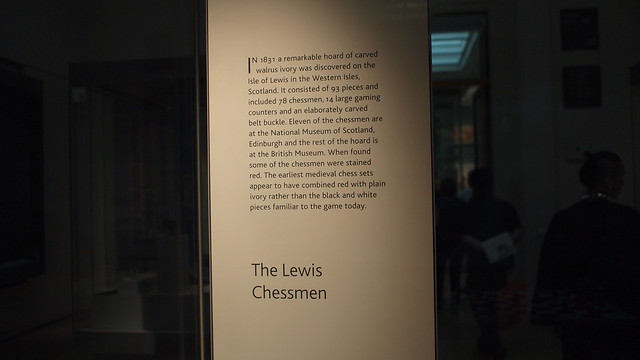
Travel and Trade
Norway colonised Greenland around AD 1000, mainly because of its large walrus population. Walrus tusks were extremely valuable and were carved in workshops in towns throughout Europe, including Trondheim in Norway. The hoard contained enough pieces for at least four separate chess sets. This suggests that the hoard may have belonged to a merchant trading between Norway and Ireland.
The chessmen were found on the Isle of Lewis but were probably made in Norway.
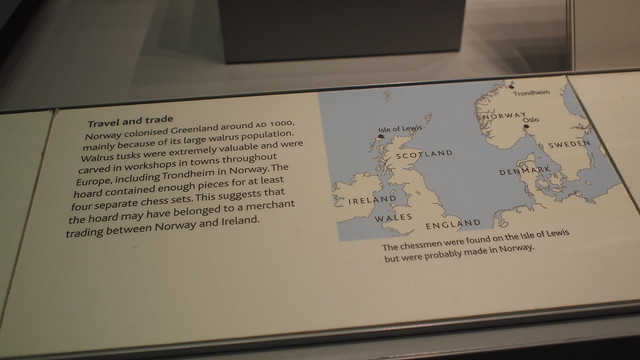
How were they made?
Walrus ivory and whale tooth are very hard materials and must be worked with metal tools. The tusks were cut with a saw and carved carefully with a chisel. The craftsmen required great skill as they had to avoid the secondary dentine, an unsightly substance which fills the pulp cavity of the tusk. The coarser grain of this material can be seen on the faces of some of the pieces or particularly on their bases. For most of the pieces the maker used ivory damaged by marine gastropods, indicating the walrus was long dead when the tusks were collected.
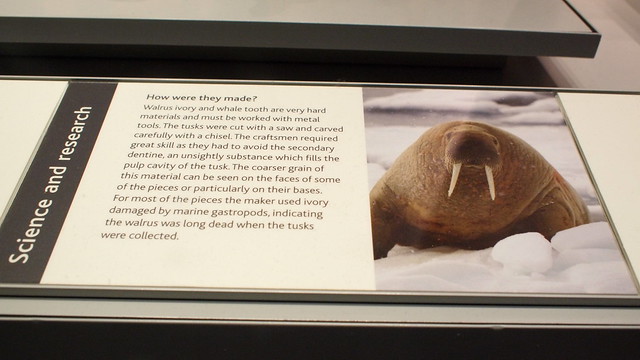
Here are some other Europe pieces which caught my eye:
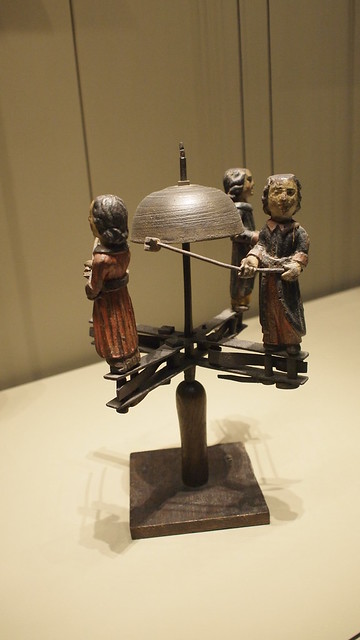
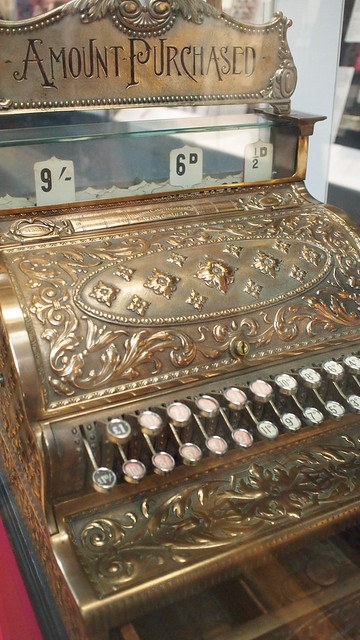
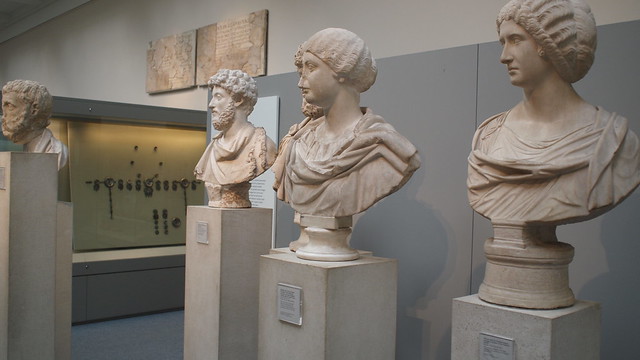
3. Ancient Egypt - Rosetta Stone and Inner Coffin of Hornedjitef
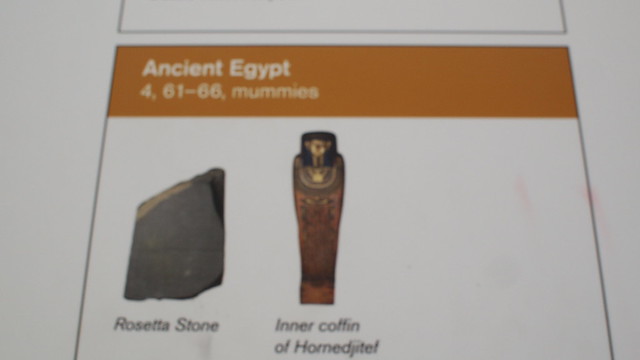
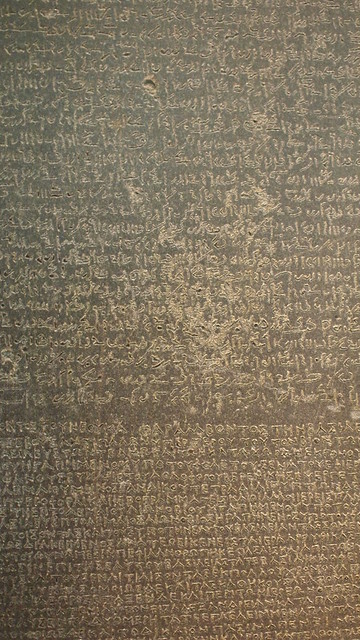
Rosetta Stone - What is the Rosetta Stone?
The Rosetta Stone carries an inscription in different languages which helped decipher the ancient Egyptian hieroglyphic script. It is the only surviving fragment of a larger stone slab (stela) recording a decree on 27 March, 196 BC. At the top of the decree was written in hieroglyphs, the traditional script of Egyptian monuments, already 3000 years old. In the middle the same decree was written in Demotic, the everyday script of literate Egyptians, and at the bottom in Greek, the language used by the government. At this time, Egypt was ruled by a Greek dynasty, and the decree was issued in honour of the boy-king Ptolemy V Epiphanes. It records the decision of the Egyptian priests to establish a royal cult in return for Ptolemy's concessions to the Egyptian temples. The granitoid stone stela was placed in a temple, probably at the city of Sais near Rashid (Rosetta).
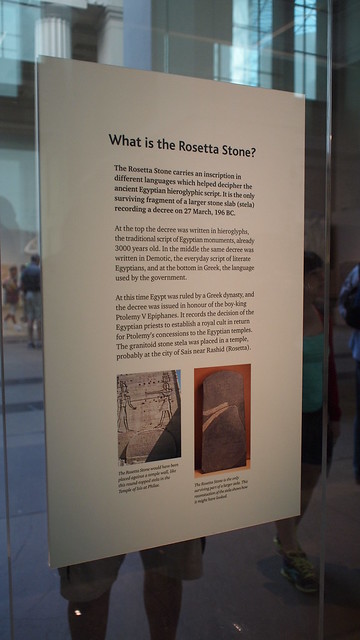
My favourite exhibits in any museum are always those from Egypt.
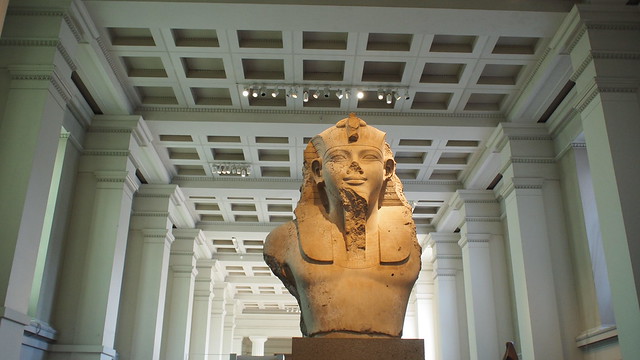
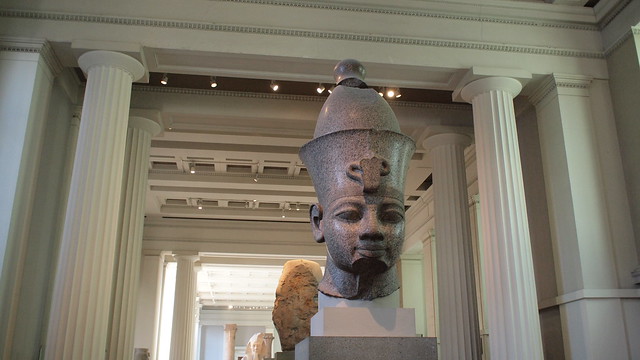

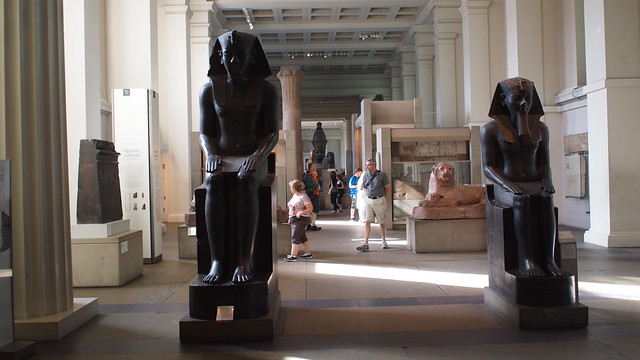
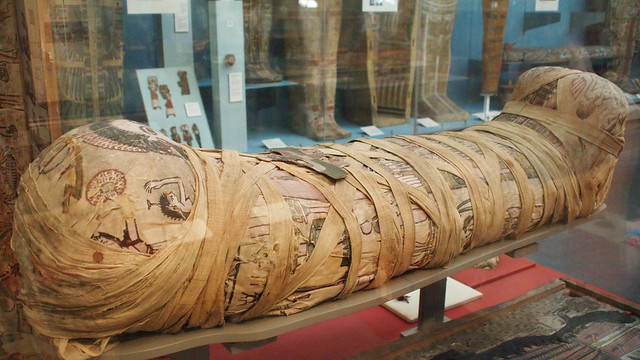
Cleopatra: the mummy of a young woman
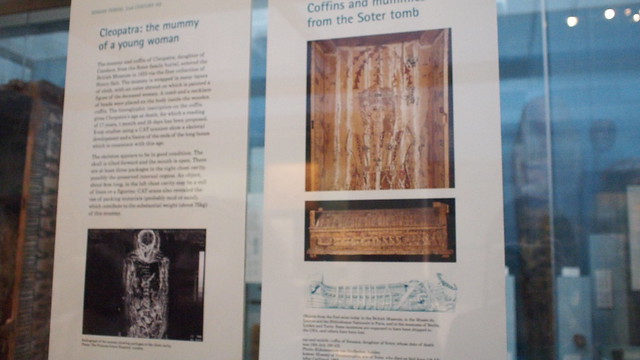
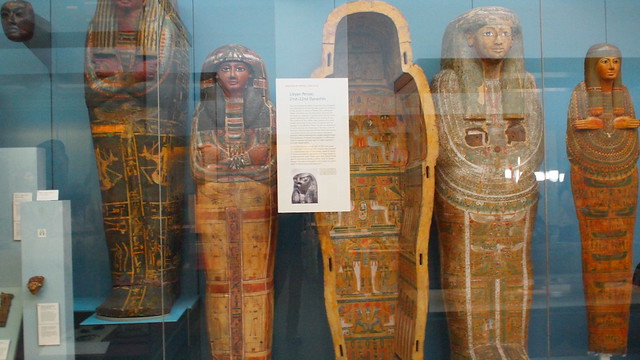
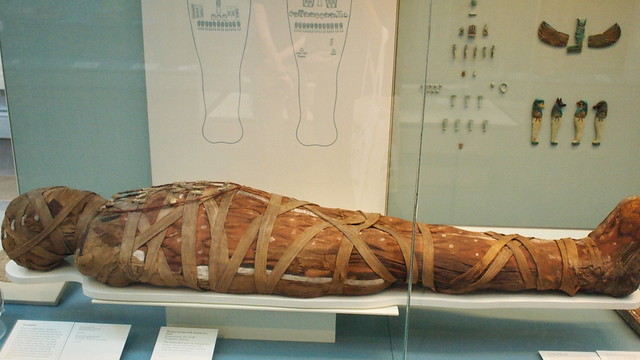
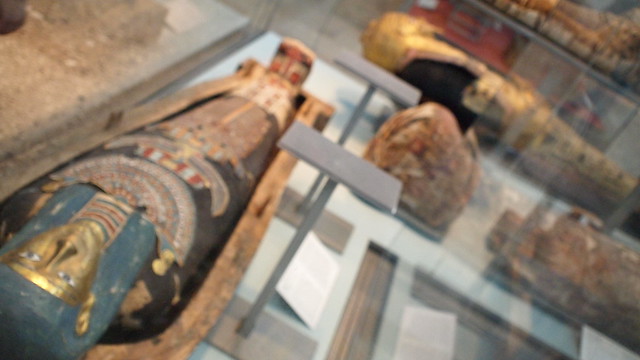
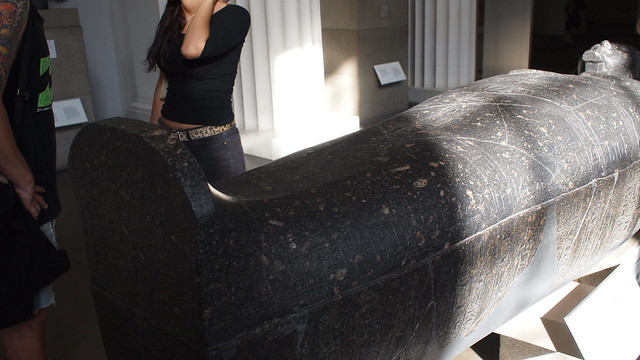
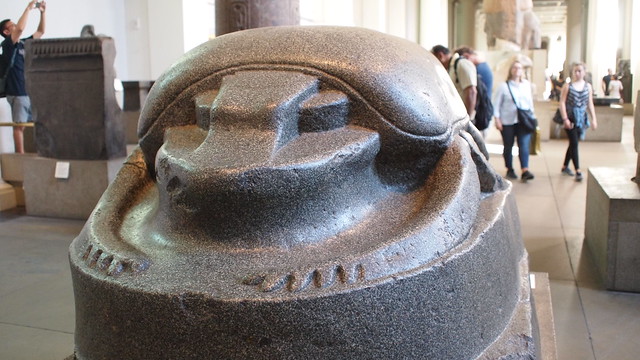
The Gayer-Anderson Cat
Bronze with silver plaque and gold jewellery
Around 600 BC Probably from Saqqara
Bequest of Major John Gayer-Anderson, 1939
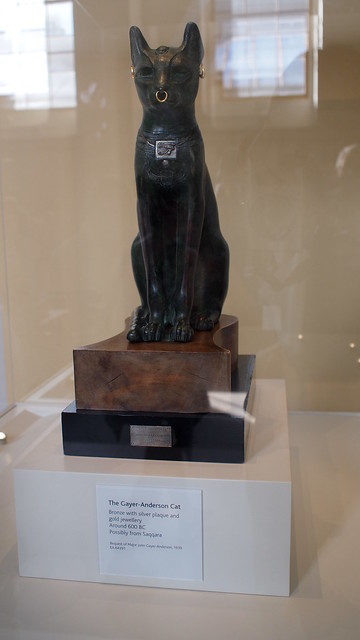

Recent Discoveries
Scientists at the British Museum investigated the cat using X-ray fluorescence, a technique where a non-destructive X-ray is beamed onto an object and its reaction identifies the elements in the material. They discovered that the cat is made from bronze containing approximately 84.7% copper, 13% tin, 2.1% arsenic and 0.2% lead. The analysis also revealed layers of different metal alloys, so originally the cat may have had a stripy tail. Major Gayer-Anderson owned the cat in the 1930s. The X-ray show that he repaired a large crack on the cat's body and wedged a metal cylinder inside its head perhaps to keep the statue in one piece. The cat was then covered in green paint, which disguised many of the changes until it was X-rayed in 2007.
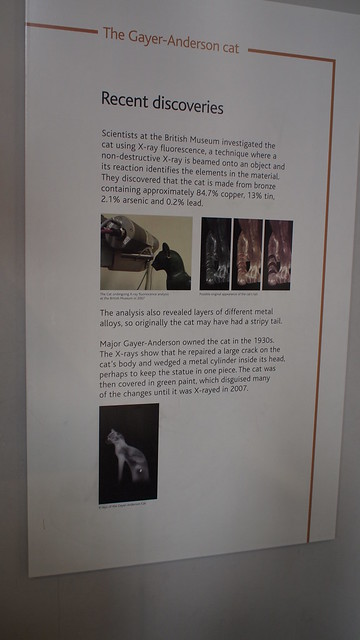
Of course, there were many other galleries and pieces around the museum that caught my eye:
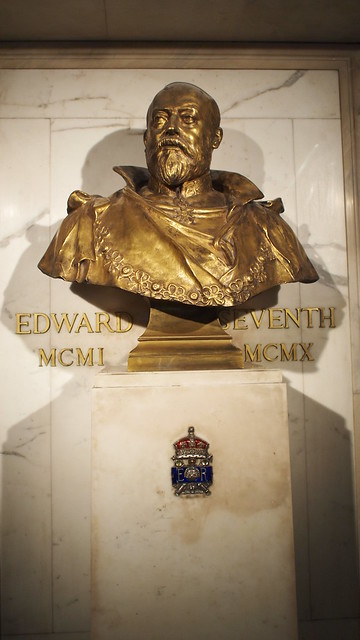
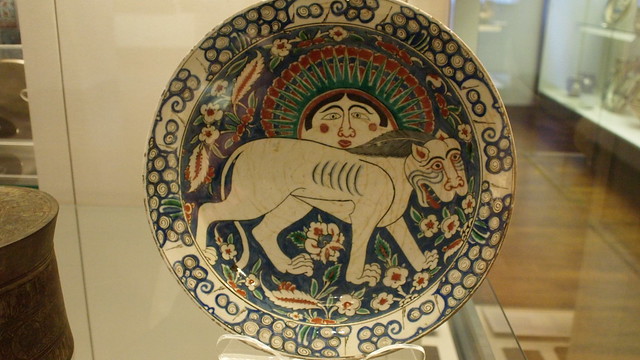
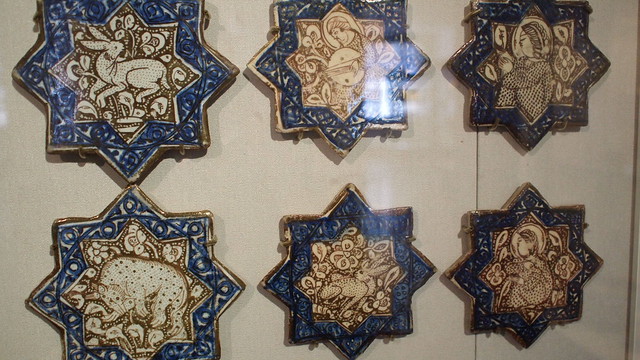
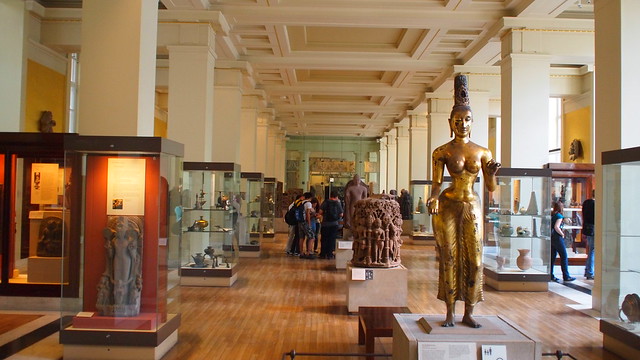
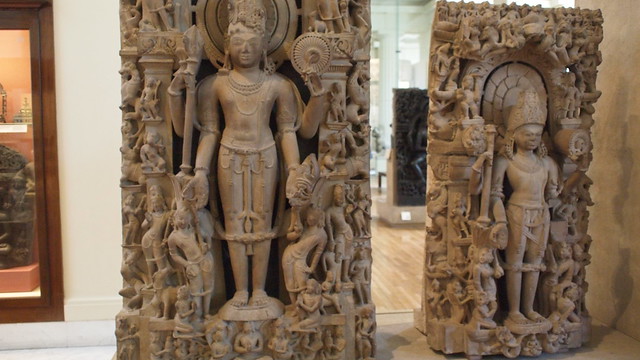
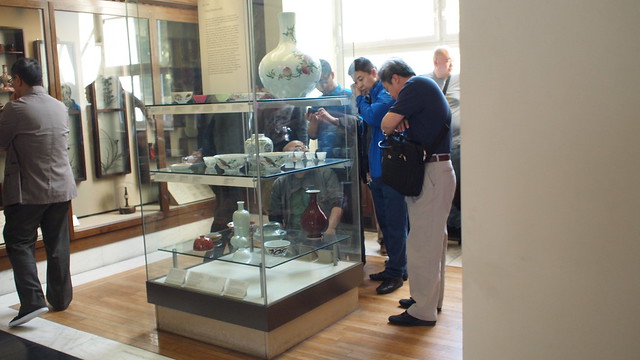

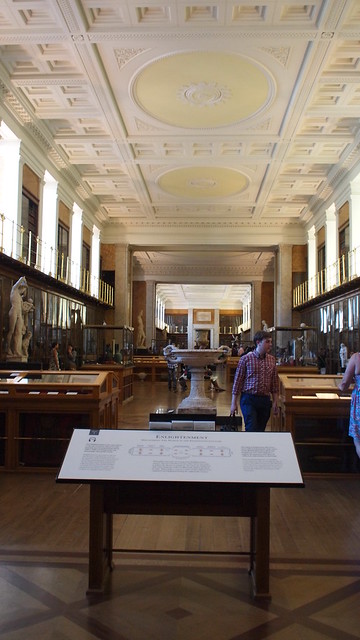
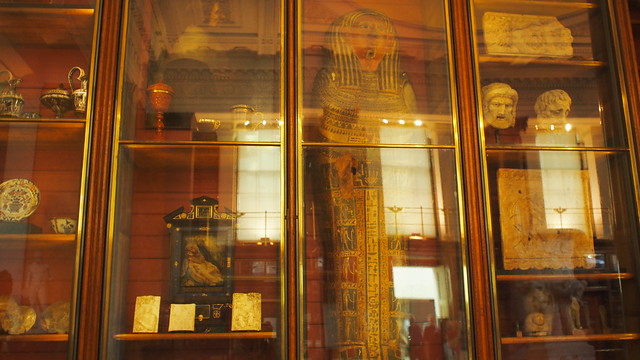

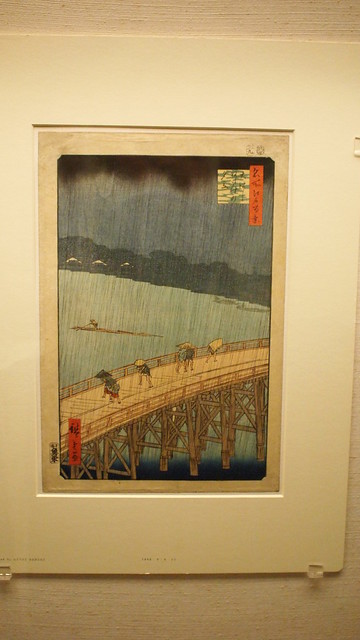
P.S. I spent a fair amount of time looking for Hokusai's Under the Wave, off Kanagawa but it was not on display. I asked.
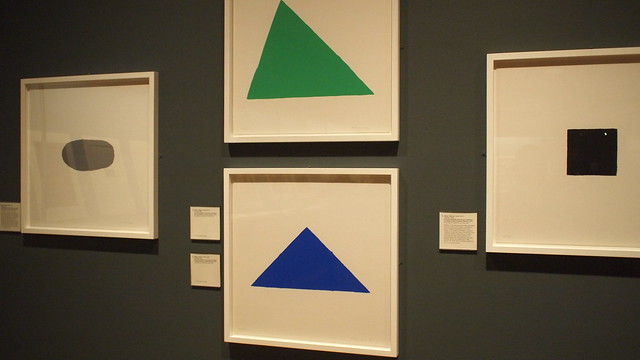
Before you say, 'I could do that', watch this video and reflect (as I did).
And then there were these huge pieces dotting the walkways:
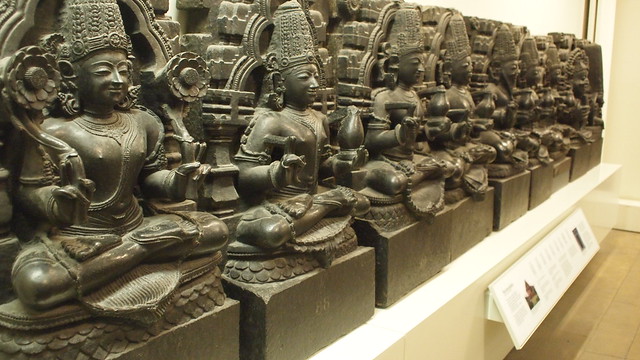
The Nine Planets
Orissa, India, 135th century
These sculptures of gods and demons represent the nine planets of Indian astronomy, astrology and myth. The planets are called grahas or "seizers" because they are understood to seize and influence the destiny of mankind. The grahas include five planets, plus the sun and moon. To these are added the mythological character Rahu, an invisible planet thought to cause eclipses. Ketu, his tail, represents meteors. The nine planets are often placed above temple doors or in temple halls and courtyards. With other cosmic symbols, the planets were used to make each temple a microcosm of the universe. The modern calendar with seven days named after planets was developed by astronomers in the eastern Mediterranean and adopted in India in the late 400s. For example, Sunday is called surya vara, after Surya, the Sun. Monday is soma vara, after Soma, the Moon. The sculptures displayed here probably come from this ruined temple of the Sun god at Konarak in Orissa, India. None of the doors survive.
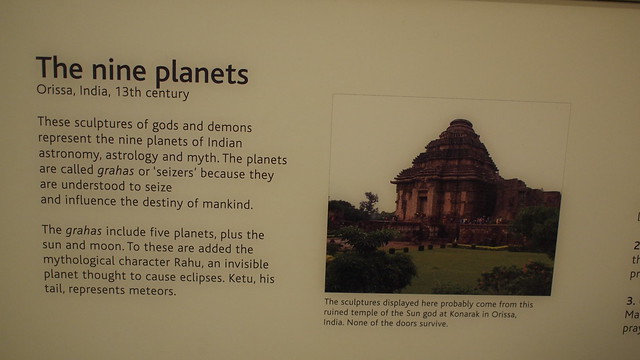
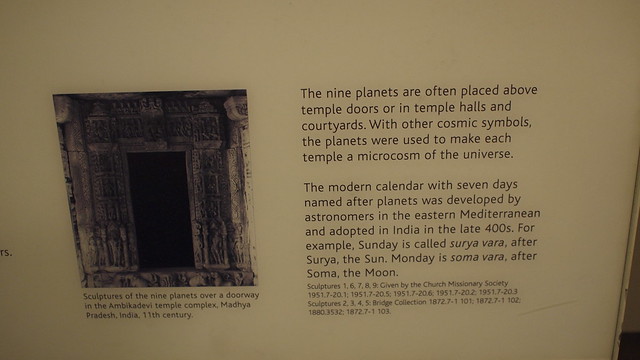
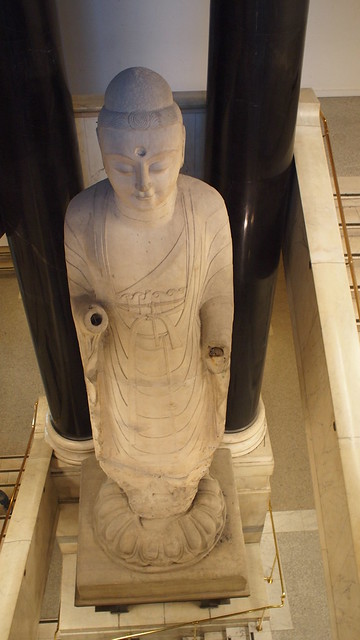
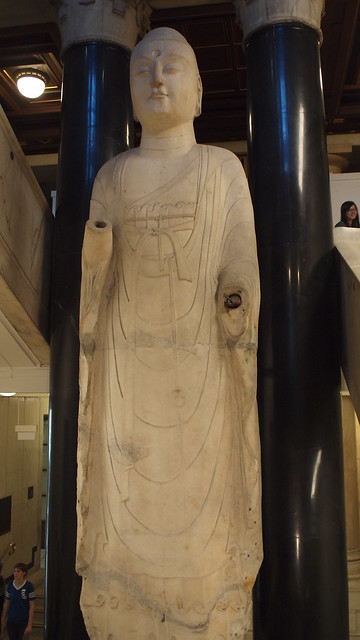
Amitabha Buddha
This statue once covered with gilding and colourful pigments, was flanked by two smaller figures of bodhisattvas (enlightened beings). The inscription on one of the bodhisattvas reveals that the temple that first housed the triad was destroyed in a fire and rebuilt during the Tang dynasty in AD 685. Presented by C.T. Loo to the Chinese Government and by them to the British Museum in 1938 to commemorate the International Exhibition of Chinese Art, 1935-1936
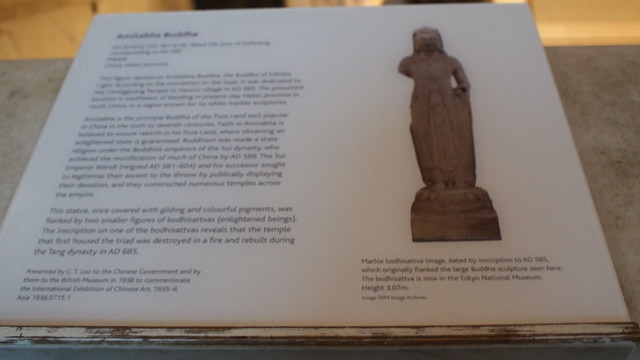
Colossal Foot
Roman, 1st - 2nd Century AD
Right foot wearing Greek sandal, originally part of the colossal statue of a senior god.
From near Naples, presented to the British Museum by Sir Wiliam Hamilton in 1784.
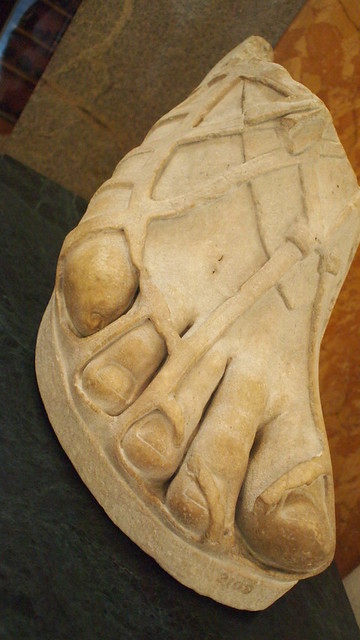

Pop by the Museum souvenir shop to find out more or remember your favourite exhibits by.
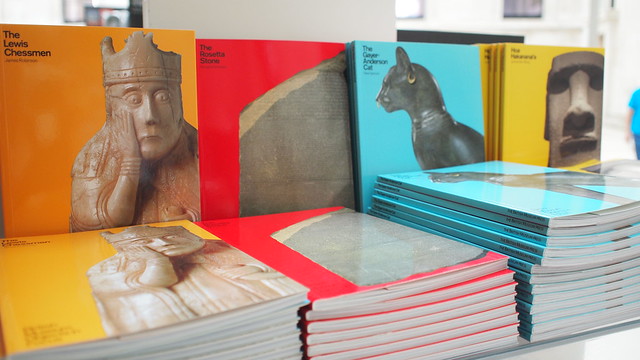
I couldn't find these woodblock prints - a disappointment.
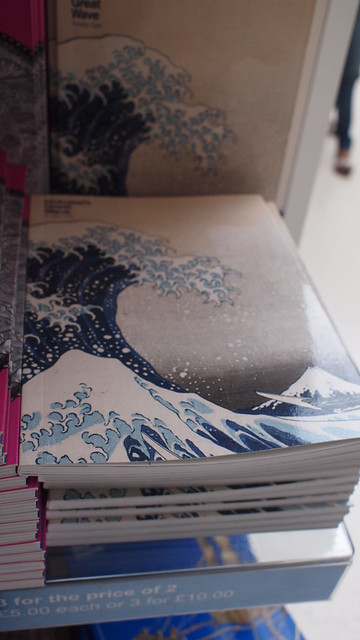
A bear of what else, but bears. Bear-ception.
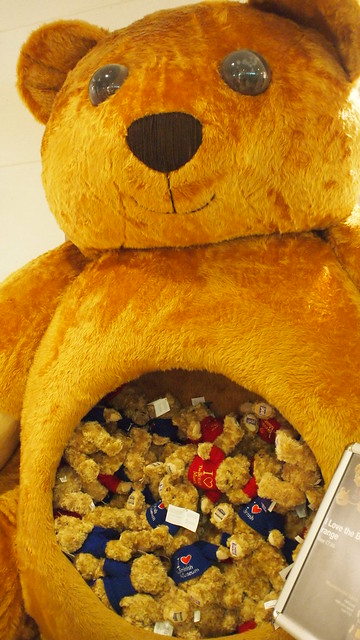
Something for all budgets and needs:

I do like the wide variety of pieces from around the world - it's like a RTW trip back in time. The British Museum has done a good job of conservation and restoration, and the place itself is a work of Art. Best yet, entry is free and it opens every day of the year. I'm not sure if many people would enjoy reading more about each artifacts (not just the "star" ones), but I would! Because you can't really tell what would catch a visitor's eye.
British Museum
Visit: http://www.britishmuseum.org/
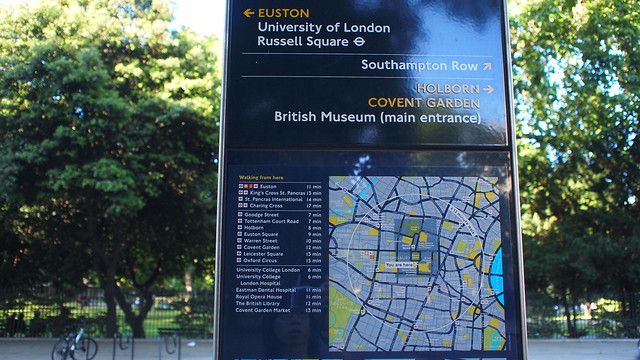
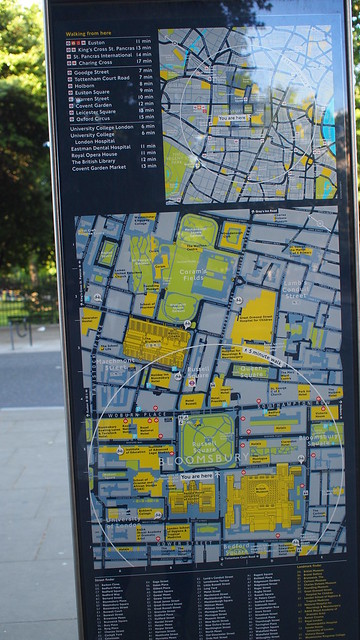

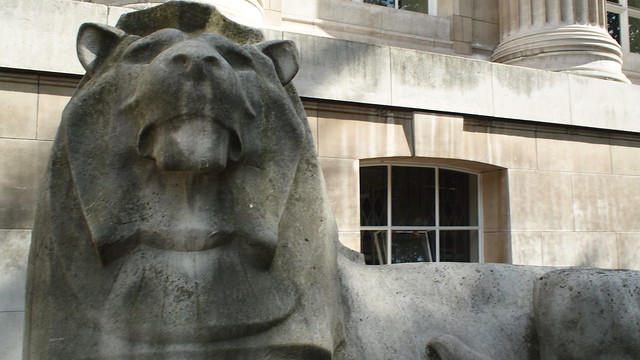
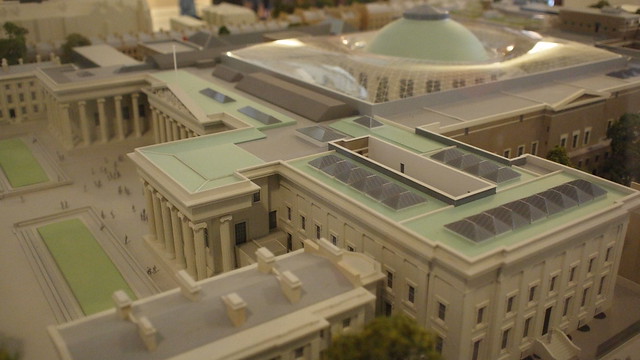
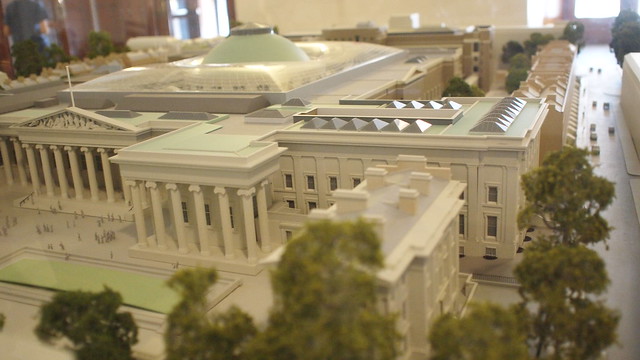
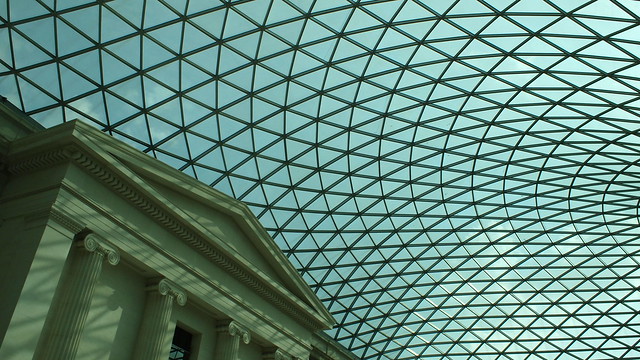
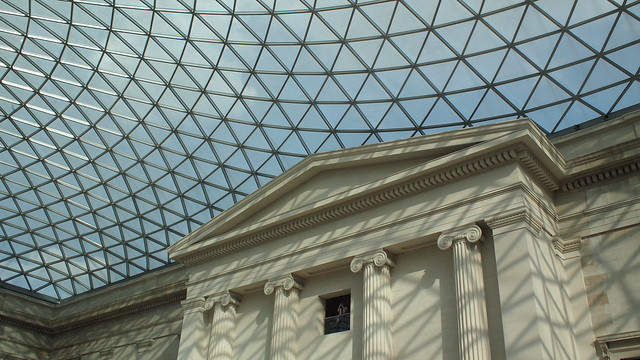
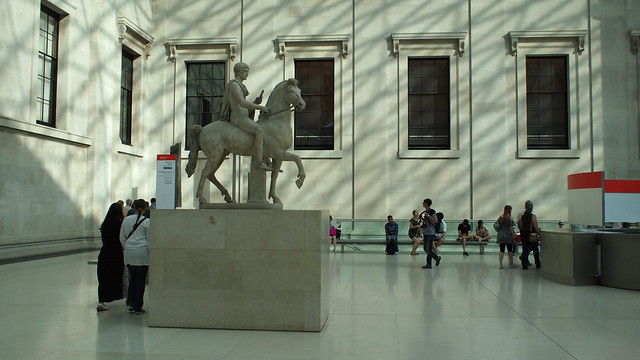


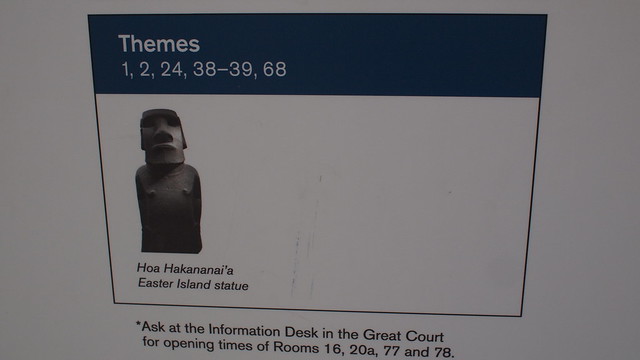
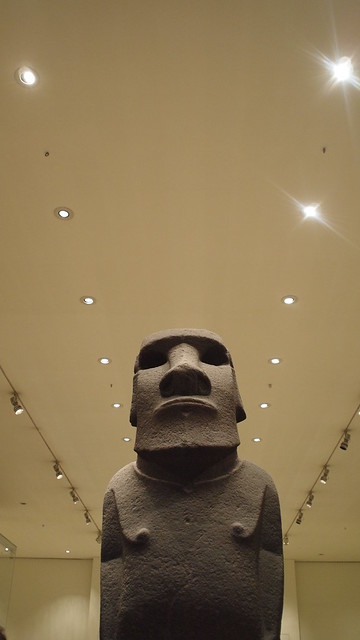
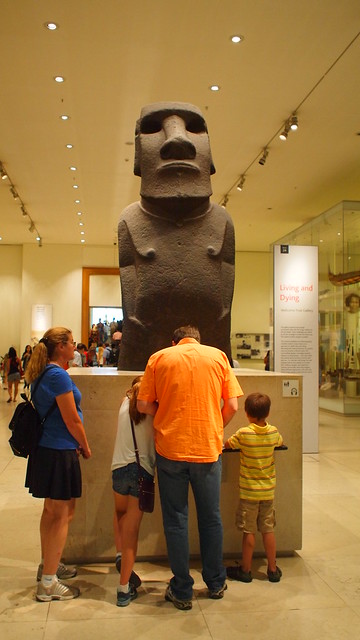
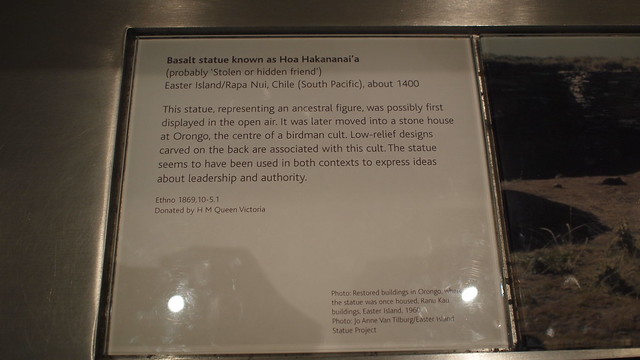
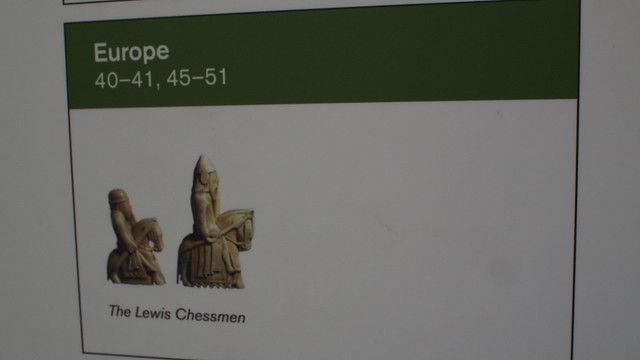
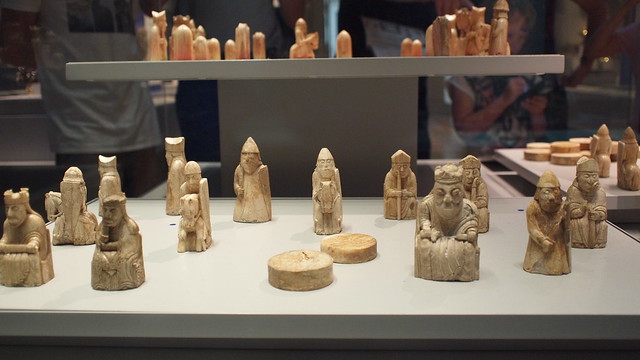
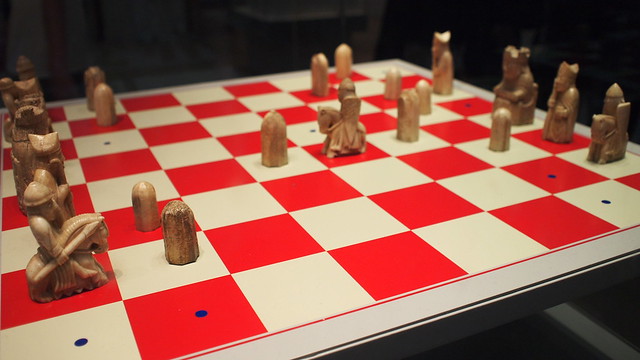
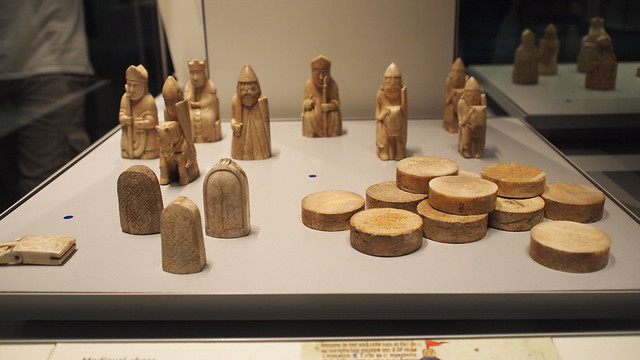


No comments:
Post a Comment